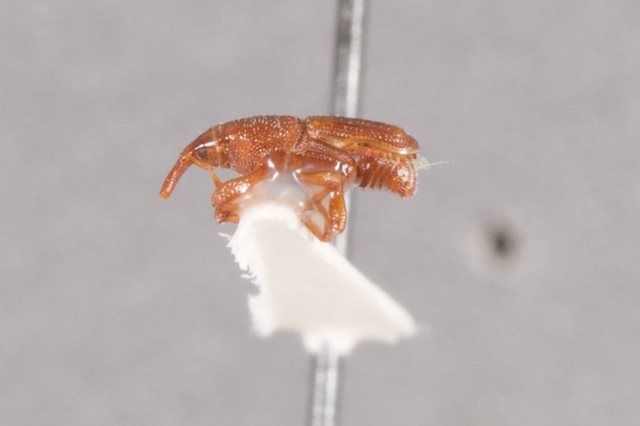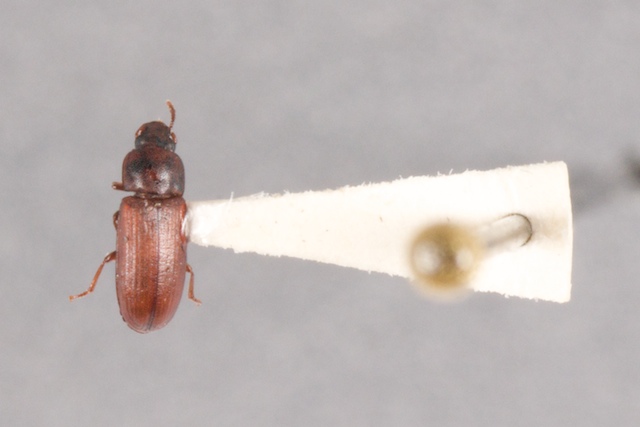What to do if you have bugs in your pantry
Inspection, cleaning, exclusion all part of pantry pest protection
While almost no one has bats in their belfry anymore, bugs in the pantry are still a fairly common sight.

However, having insect pests in your pantry doesn’t automatically mean you’ve been negligent about keeping your pantry in order. Sometimes the sneaky little creatures find their way in by infiltrating the foods you buy at the store and stowing away before they’re put into your pantry.
“Pantry pests are just insects that feed on stored food items or products,” said Molly Keck, Texas A&M AgriLife Extension Service entomologist, Bexar County. “Some of the most common pantry pests include ants, weevils, Indian meal moths, sawtooth grain beetles and flour beetles.”
The insects themselves are harmless to humans, and there is little to no likelihood of anyone becoming ill if one of these insect interlopers is accidentally consumed.
“The worst thing about them is the ‘gross factor’ of having them in your food and the fact you have to throw the infested food out and replace it, which adds to your grocery bill,” she said. “And, of course, there’s the time and trouble it takes to get rid of them.”
Keck said the pantry items most usually infested are the oldest, most difficult-to-reach foods in the pantry, but even new dry foods and unopened containers may be infested. Some pantry pests can penetrate plastic, waxed paper and even cardboard.
Keck said before buying a pantry item in the store, check to be certain the bag or container is well sealed and undamaged.
“This way, you don’t inadvertently invite any of these pests into your home,” she said.
Keck said most pantry pest problems can be prevented by using all dried food within two to four months of purchase. Spices and other products that likely will be kept for longer periods should be sealed in airtight containers.
Getting ants out of your pantry
Probably the most encountered pantry pest is the ant, Keck said, but not all ants should be ‘treated’ the same.

“There are lots of different species of ants, and you really should know the species you’re dealing with in order to properly treat for it,” she said. “For example, sugar or pharaoh ants, which are a few of the more common pantry pests, should never be sprayed or they will disburse and bud into multiple colonies.”
Keck said the most effective way to treat for sugar and pharaoh ants is to use an ant bait.
“When you leave out a bait, the ants think it’s food and take the toxin back to their hiding place to share with the other ants. In that way, they do most of the work of killing the colony.”
She also noted the use of a bait removes the worry of ant dispersal and where the insecticide spray might drift.
Keck said while spray insecticides can be effective against other types of ants, ant baits or gels are the preferred method of treatment if being applied near food.
“If you’re using a spray, be sure to remove food products, utensils and containers from the treatment area,” she said. “Read and follow all label instructions. And allow the spray to dry completely before placing clean shelf paper on the shelves and returning items to the pantry.”
Freezing out the weevils
Another well-known pantry pest, the weevil, only feeds on whole grains.
“Once these pests have reproduced, it’s usually easy to notice their presence in your pantry because they appear as small, brown specks in foods that are usually light-colored,” Keck said. “You usually find weevils in rice or corn products, flour, rice, cereals and pasta, but you can also find them in chocolate, spices and other grain-based products.”
She noted many people mistakenly call any small beetle in their pantry a weevil, but unlike other pantry pests that just eat food, weevils also lay eggs inside the food. Once the eggs hatch, the larvae continue to eat that food until they are fully grown.

“There are some steps you can take to try to remove weevils from the pantry before calling in an exterminator,” Keck said. “Remove any unsealed dry foods from pantry shelves, including containers of flour, rice pasta and cereal. Toss out any infested products as well as any unopened boxes of food containing whole grains, as weevils can live inside cardboard boxes.”
She said any dried foods not infested with full-grown weevils can be placed in the freezer for four or more days to kill any larvae that may be present. Also, freezing dry foods soon after buying them is always a good preventive measure to ensure there are no live weevils inside.
“Once you have removed all infested products, clear the pantry shelves completely and vacuum every shelf and crevice,” Keck said. “Then wipe down the shelves with hot soapy water and leave the shelves to fully dry before restocking with pantry items.”
Exclude beetles by disposing and cleaning
Flour beetles and confused beetles are also among the more common pantry pests. The two species are almost identical at about 3/16 inch in length and both have flattened bodies ideal for crawling into cracks and crevices.

“For practical purposes of treatment and control, it doesn’t matter which species it is because the practices are the same,” Keck said. “Adults and larvae of these species feed on stored food, primarily in milled or prepared products, and are perhaps the most common pest of processed flour. In addition to flour, they are found in cereals and other dried foods such as beans, peas, peppers and nuts.”
Keck said removing and disposing of any infested product and cleaning pantry shelves thoroughly with soap and water is again the best initial approach for managing these pests.
“Again, remove all food and containers before cleaning with soap and water and let the shelves dry before reapplying shelf paper and/or putting the items back,” she said.
“In most cases for keeping pantry pests at bay, exclusion is your best approach,” Keck said. “If you do a pantry ‘spring cleaning’ from time to time in order to remove older items and check to be sure new food items are undamaged and properly sealed, you’re already well on your way to controlling any unwelcome pantry pests.”


